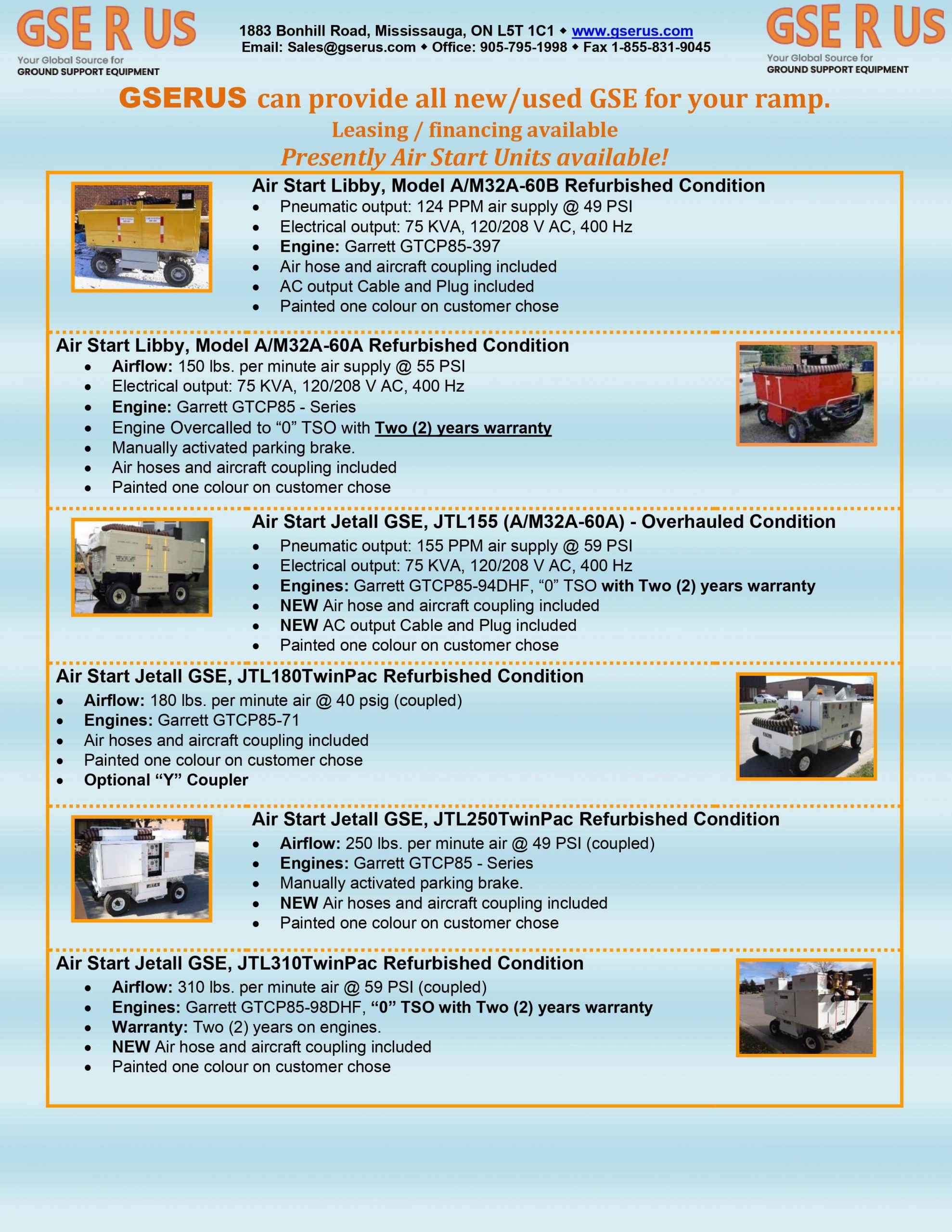Introduction
In the fast-paced world of aviation, where every minute counts, Air Start Units (ASUs) play a critical role in powering up jet engines. ASUs are essential ground support equipment used to initiate the rotation of jet engines, enabling aircraft to start their engines without the need for onboard power. In this blog post, we’ll explore the significance of ASUs, their functioning, types, and their role in ensuring smooth operations at airports worldwide.
Understanding Air Start Units
Air Start Units, commonly referred to as ASUs, are mobile devices designed to provide compressed air to aircraft engines during the starting process. These units are particularly crucial for larger aircraft, such as commercial airliners, which require a significant amount of air flow to initiate the engine’s rotation and start the combustion process.

How Air Start Units Work
ASUs operate by delivering high-pressure, pre-compressed air directly into the aircraft’s engine starter. This air serves as the driving force that turns the engine’s core components, eventually leading to ignition and the self-sustained running of the engine. ASUs ensure that engines start up reliably and safely, even in challenging weather conditions.
Types of Air Start Units
Mobile ASUs: These units are mounted on trucks, making them easily transportable around the airport. Mobile ASUs are versatile and can be deployed to various aircraft as needed.
Cart-Mounted ASUs: These units are more compact and are often found on smaller airports or used for regional aircraft. They can be easily moved around by airport personnel.
Stationary ASUs: Larger airports or those with consistent aircraft types may have fixed ASUs located strategically at different bridge gates or maintenance areas.
